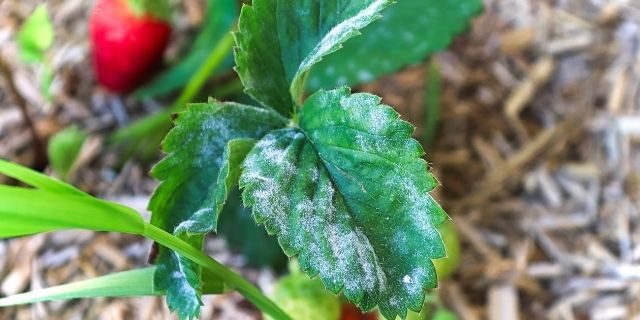17
Mar
Researchers Find Nontoxic Method Kills a Problematic Fungus When It Least Expects It

(Beyond Pesticides, March 17, 2021) Ultraviolet radiation (UV-C) applied at night can successfully kill powdery mildew in farm fields, providing a potential route to significantly reduce the use of toxic fungicides, new research published in the journal Plant Disease finds. “UV treatments applied once or twice weekly were as effective as the best available fungicides applied on similar schedules for control of strawberry powdery mildew,” study author Natalia Peres, PhD, of the University of Florida said. “It’s not a one-time fluke.” The results are encouraging, and have the potential of reducing fungal pressure through non-toxic means, but like all pest management tools should be used as part of a system the focuses first and foremost on fostering healthy soils and biodiversity.
Powdery mildew is a fungal pathogen that can infect a range of plants, from cucurbits to grapes, apples, onions, and cannabis. For the study, the primarily Florida-based researchers focused on the state’s $300 million strawberry industry. Powdery mildew is often facilitated by high humidity, and can be exacerbated when crops are grown in tunnels or other enclosed areas due to lack of airflow and poor ventilation. The fungus presents as a white powder on the surface of plant leaves, and can spread through the production of asexual spores.
There are a range of methods currently in use to fight powdery mildew. Conventional fields are more likely to apply synthetic fungicides such as myclobutanil, quinoxyfen, or azoxystrobin. Organic growers often use softer, less hazardous products like horticultural oils and bicarbonates. All growers are generally encouraged to plant cultivars that have been bred to be more resistant to powdery mildew. Although small scale farmers and gardeners have a better opportunity to practice mechanical and cultural controls, such as removing diseased leaves and thinning out susceptible plants, these approaches can be more difficult to implement on a larger scale.
Researchers tested the efficacy of UV-C light by affixing a series of light panels to a platform that was pulled behind a tractor over rows of strawberry plants. The light applications took place a night, because powdery mildew evolved to withstand the UV rays within natural sunlight. However, it seems as though that adaptation also made the pathogen more susceptible UV light at night.
Researchers partnered with a Norwegian robotics company to produce the light machine. They indicate that despite the need for it to be custom built, the costs are lower than spray equipment, and it is only one-time – no additional costs other than labor will be required after the machine is delivered and working. A University of Florida release indicates that the machines are already being trialed in other cropping systems, such as grapes, hops, and cucumbers. “While research on these crops is still underway, UV applications seemed effective controlling powdery mildew in all cases,” said Dr. Peres.
Powdery mildew has developed resistance to a wide range of fungicides. While the timing of this discovery is fortunate and has the potential to help many growers manage disease with fewer chemicals, no tool should be used as a replacement for healthy, sustainable farming practices. Although there is no indication that powdery mildew will eventually become resistant to UV light, the pathogen’s ability to withstand ultraviolet rays during the day could indicate the need to use this new tool sparingly.
Small-scale, diversified organic farms provide the best opportunity for growers to manage pests while ensuring strong yields and profits. Research shows that higher rates of plant diversity around farms corresponds with lower pest pressures, while less diverse cropping systems lead to more intensive pesticide use. Any system, whether organic or chemical-based, that relies on tools and outside inputs to reach economies of scale must be thoroughly scrutinized for its long-term sustainability.
Beyond Pesticides continues to join with advocates to improve organic production by ensuring the integrity of the organic label is upheld. Under organic certifications, UV-C would not fall under irradiation and could be an effective means of pest management as part of a broader organic system. For information on topics before the National Organic Standards Board this spring, stay turned to the Keeping Organic Strong program page. And see the ManageSafe webpage for non-toxic methods to address common garden and household pests.
All unattributed positions and opinions in this piece are those of Beyond Pesticides.
Source: University of Florida, Plant Disease










